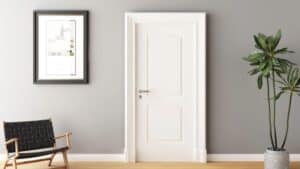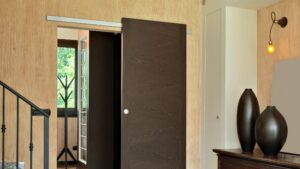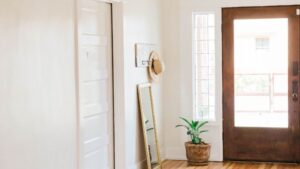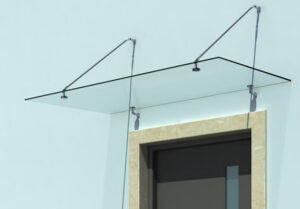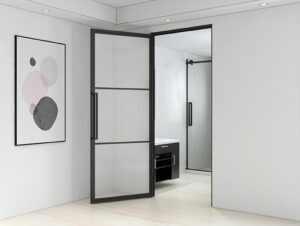Ultimate Barn Door Size Guide For Perfect Installation
To ensure the perfect fit for your barn door, accurate measuring is essential. Here are the key aspects to focus on:
Width and Overlap: For a sliding barn door, measure the width of the door opening and add at least 2 inches to ensure an overlap with the door frame, providing privacy and better aesthetics. Most standard barn door sizes range from 36 inches wide to 42 inches wide.
Height Clearance: The height from the floor to the ceiling must accommodate the barn door and the hardware kit. Typically, the door height is about 80 inches, similar to standard doorways. It’s recommended to have the door match the door opening height or exceed it by an inch.
Track Length: Thetrack should be at least twice the width of the door to allow it to slide fully open. For a double barn door, calculate the combined width of both doors for the required track length.
Wall Space and Obstructions: Ensure there is enough wall clearance to the side of the doorway for the door to slide comfortably without hitting switches, outlets, or other obstacles.
Measuring: Use atape measure, a pencil, and paper to jot down your measurements. If you’re opting for a custom barn door size, consider any trim, molding, or door jamb differences in your measuring.
What Is a Barn Door?
A barn door is a type of door that slides horizontally on a track mounted above the entrance. Unlike traditional doors, a sliding barn door typically rolls to the side, conserving space that would otherwise be needed for the door swing. This style of door is ideal for use inside your home where space is at a premium.
For larger openings, a double barn door setup allows two doors to slide—one on each side of the entrance—creating a stylish and functional way to access a room. Both single and double barn doors bring a unique blend of aesthetics and practicality to your space.
In terms of functionality, barn doors provide privacy just as a regular door would, but with an added artistic flair that can complement your home’s design. Whether you’re looking to add a rustic charm or a modern edge, there’s a barn door style available to suit your personal taste.
Remember that while barn doors are visually attractive, they might not offer the same level of sound insulation or sealing as regular hinged doors. However, for areas where these factors are not a concern, a barn door can be an excellent option to enhance the appearance andfunctionality of your entrance.
The Advantages of a Barn Door
Choosing a barn door for your space, you’re not just selecting a functional element of your home; you’re also making a design statement. Space-saving is a primary benefit because, unlike traditional hinged doors that require swing space, barn doors slide parallel to the wall. This is particularly advantageous in compact areas where every square inch is crucial.
Barn doors serve as more than just doorways; they are standalone design features that can enhance the visual appeal of a room. With a variety of materials and finishes available, they offer extensive decorative options that can be tailored to your personal style. Whether you’re looking for a rustic, reclaimed wood look or a sleek, modern finish, there’s a barn door that will match your design vision.
Versatility is another key advantage of barn doors. They can be used in numerous spaces within your home, such as closets, pantries, or even as a stylish room divider. This flexibility allows you to maintain design consistency throughout your living space.
Here’s a summary of what a barn door brings to your home:
- Space Efficiency: Slides along the wall, no swing space needed.
- Aesthetic Variety: Multiple styles to complement your home’s design.
- Functionality: Acts as a door and a design piece.
- Versatility: Fits various applications in your home.
By adopting barn doors, you’ll find that your rooms not only feel more open but also gain a sense of character that traditional doors might not convey. Choose wisely to ensure that your new barn door is a perfect match for your functional and aesthetic needs.
Easy Measurement

Properly measuring for a barn door ensures a perfect fit and smooth operation. This concise guide walks you through each step with precision, covering everything from the width of your doorway to the necessary clearance for the track and hardware.
Step One: Measure the Door Opening Width
Use a tape measure to ascertain the distance from one side of the door frame to the other at the widest point. Record this measurement, as the barn door will need to be wider than the doorway to provide adequate coverage.
Step Two: Measure the Door Opening Height
Next, measure the height from the floor to the top of the door frame. This height is crucial as it dictates the length of the door track needed and ensures the door has enough space to operate without obstruction.
Step Three: Allow for Extra Space
Barn doors should overlap the door opening on all sides. Generally, an additional 1-2 inches on either side of the door frame and 1 inch above the door opening is recommended. Write these calculations down clearly for reference.
Step Four: Determine Your Barn Door Height
To establish the correct barn door height, add appropriate space above the door frame to accommodate the hardware while ensuring the door does not drag along the floor.
Step Five: Measure for the Door Track
The track length should be double the width of the barn door to allow the door to open fully. Ensure you have enough wall space to support this length.
Step Six: Don’t Forget the Clearance of the Ceiling, Wall and Floor
Check for and note any potential obstacles like molding, outlets, or vents. Confirm there is enough ceiling and wall clearance for the track and hardware, and sufficient floor space for the door to move freely.
Step Seven: Order Your Own Barn Door!
Once you’ve gathered all the measurements, you’re ready to order your barn door. Whether you opt for a standard size or a custom barn door, ensure your measurements are precise for an easy installation.
3 Creative Barn Door Design Ideas
To select a barn door for your home, consider these three design ideas that combine style and functionality, ensuring your space is both unique and practical.
- Classic Rustic Charm:
Embrace the traditional aesthetic with a wooden sliding barn door featuring vintage hardware. Use reclaimed wood for an authentic look or a weathered finish to add character.
Design tip: Add decorative blackstrap hinges or iron nailheads for a custom barn door feel.
- Modern Farmhouse:
To complement a contemporary farmhouse style, pick a barn door with clean lines and minimalist hardware. Paint it in a neutral shade like white or soft gray to match your modern decor.
Design tip: Select frosted glass panels to balance privacy and natural light.
- Bold and Artistic:
Transform your space with a decorative barn door that doubles as a piece of art. Think bright colors, intricate patterns, or even a chalkboard surface to unleash your creativity.
Design tip: Customize your barn door with your personal artwork or a unique pattern that reflects your artistic style.
Remember, your barn door is more than just a functional element; it’s a statement piece that exemplifies your home’s design. Choose a design that feels right for you and your home’s overall aesthetic.
Common Mistakes To Avoid When Measuring Your Barn Door
Precision is key. Avoid these common missteps to ensure a proper fit:
Ignoring Wall Clearance: You must take into account the space available on either side of the doorway. Barn doors slide to one side and require extra wall clearance to accommodate the door’s width when open.
Overlooking Obstacles: Identify any light switches, outlets, or vents that might interfere with the door’s movement. Ensure the door size allows it to slide freely without any obstacles getting in the way.
Inaccurate Measurements: Always utilize a tape measure for precision and double-check your measurements. Note these numbers down with a pencil on paper to avoid confusion later.
Not Accounting for Hardware: The size of the hardware can affect the door’s fit. Doors generally require extra width to overlap the opening, preventing gaps.
Mismeasuring Door Frame: Measure the width of the door frame from the outside edges of the trim and add at least two inches to your width measurement. For height, measure from the floor to the top of the door frame and typically add an inch.
Forgetting to Level: Ensure your tape measure stays level while measuring. A slanted measurement could result in a door that doesn’t fit correctly.
By avoiding these simple mistakes, you can determine the ideal barn door size that will complement your space and function properly.
Frequently Asked Questions
When selecting a barn door for your space, it’s crucial to choose the correct size for functionality and aesthetic appeal. This section answers common queries regarding the sizing of barn doors to ensure a perfect fit for your space.
How do you determine the appropriate size for a sliding barn door?
To determine the appropriate size for a sliding barn door, begin by measuring the width and height of the door opening. You’ll also need to consider the space around the doorway to ensure the door can slide fully open without obstruction.
How much larger should a barn door be compared to the doorway?
A barn door should be larger than the doorway to provide adequate coverage. Typically, barn doors extend an inch or more beyond the door frame to cover the entire doorway and prevent gaps when closed.
Are there standard sizes for exterior barn doors, and what are they?
Exterior barn doors often come in larger sizes compared to interior versions, with standard sizes being different for various structures. While a standard size may not be as universally defined for exterior doors, common dimensions include widths and heights larger than interior doors to accommodate bigger entryways.
What is the maximum size available for a sliding barn door?
The maximum size available for a sliding barn door can vary widely, but custom options are available that exceed the common standard sizes for both interior and exterior barn doors. These custom sizes should be measured and fitted according to the specific needs of your space.
Is a special size track required for a particular barn door width?
Yes, the size of the track required for a sliding barn door directly correlates to the door’s width. The track should be at least twice the width of the door to function properly, allowing the door to open fully without any hindrance.

